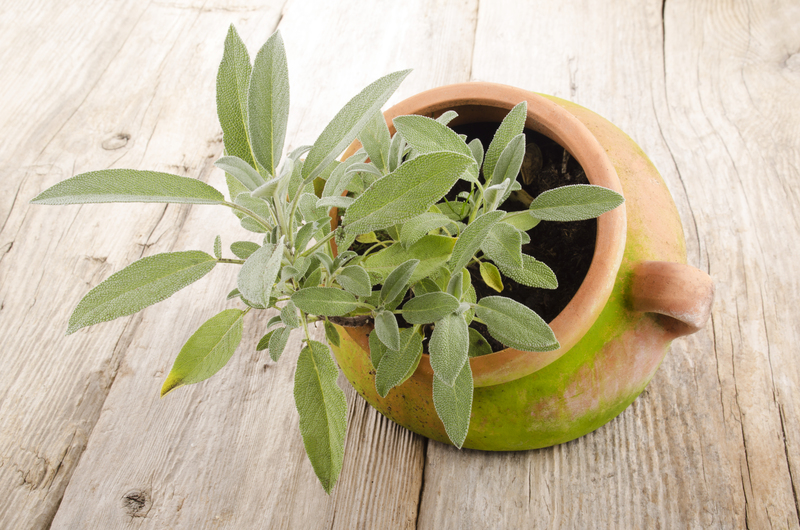Step-by-Step Guide to Cultivating Your Own Herb Haven
Posted on 25/08/2025
Step-by-Step Guide to Cultivating Your Own Herb Haven
Imagine the joy of stepping into your backyard, patio, or kitchen and plucking fragrant, fresh herbs to elevate your cooking, teas, and wellness routines. Whether you're a home chef, a health enthusiast, or simply love gardening, cultivating a vibrant herb garden is wonderfully rewarding. In this comprehensive guide, you'll discover practical tips, essential details, and expert secrets to establishing your very own herb haven, tailored to your lifestyle and space--no matter how big or small.
Why Start Your Own Herb Garden?
- Freshness at Your Fingertips: Homegrown herbs offer unbeatable taste, aroma, and nutritional value compared to store-bought options.
- Save Money: A few well-maintained plants can yield months' worth of fresh leaves and sprigs, reducing your grocery bills.
- Wellbeing Boost: Growing herbs can be therapeutic, reducing stress and connecting you with nature.
- Eco-friendly Choice: Minimize plastic packaging and reduce your carbon footprint by growing at home.

Getting Started: The Essentials for a Thriving Herb Garden
1. Choosing the Right Spot
Location is everything in your herbal journey. Most herbs thrive in full sunlight, so identify a spot that gets at least 6 hours of daily sunshine. Windowsills, balconies, patios, and raised beds are all suitable for cultivating herbs, provided they have:
- Good air circulation
- Protected from harsh winds
- Well-draining soil or containers
2. Selecting Your Herb Varieties
The key to creating a personal herb sanctuary is to plant species you'll actually use and enjoy. Consider kitchen staples, medicinal herbs, or aromatic selections for teas and home remedies.
Popular Culinary Herbs:
- Basil (sweet, Thai, lemon varieties)
- Parsley (curly or flat-leaf)
- Cilantro/Coriander
- Chives
- Rosemary
- Thyme
- Oregano
- Mint (peppermint, spearmint, chocolate mint)
- Dill
- Sage
Specialty & Medicinal Herbs:
- Lemon balm
- Lavender
- Chamomile
- Echinacea
- Stevia
_Tip: Some herbs like mint and lemon balm can spread aggressively. Keep them in pots to control their growth._
Step-by-Step Process to Build Your Herb Haven
Step 1: Gather Your Supplies
- Herb seeds or starter plants (choose reputable sources for best results)
- Containers or pots (with drainage holes) if gardening indoors or on patios
- Quality potting mix or garden soil enriched with compost
- Trowel or small shovel
- Watering can or spray bottle
- Labels to identify your herbs
Step 2: Prepare Your Soil or Potting Mix
The secret behind a lush herb oasis is good soil. Most herbs prefer a well-draining, light, and fertile mix. Blend in compost or well-rotted manure to boost nutrients. Avoid heavy clay or waterlogged soil, which can cause root rot.
- For container gardens, use a high-quality organic potting mix.
- For raised beds, amend native soil with compost and sand as needed for texture.
Step 3: Planting Techniques
From Seeds: Most herbs are easy to start from seed. Follow these pointers for success:
- Read seed packets for tips on depth and spacing.
- Sow seeds in moist soil and cover lightly.
- Maintain gentle moisture (not soggy!) until seedlings appear.
- Thin seedlings as they grow to avoid overcrowding.
From Transplants: For a head-start or instant gratification, plant young herb seedlings.
- Dig holes twice as wide as the root ball.
- Remove the plant from its container, tease out tangled roots, and set in the hole.
- Backfill, firming the soil gently around the base.
- Water thoroughly after planting.
Step 4: Watering & Feeding Your Herb Sanctuary
- Water consistently--Most herbs need moderate moisture. Allow soil to dry out slightly between waterings, especially for Mediterranean types like rosemary, oregano, and thyme.
- Overwatering is the most common cause of issues.
- Fertilize lightly. Use an organic liquid fertilizer or add more compost every month during active growth.
Pro tip: Group herbs with similar water requirements together for easier care.
Step 5: Providing Light and Temperature Control
- Sun-loving herbs require at least 6-8 hours of bright light.
- Indoors, place containers near a south or west-facing window. Supplement with grow lights if needed.
- In hot climates, provide afternoon shade to prevent wilting.
- Watch for signs of stress--leggy growth means not enough light!
Step 6: Pruning and Harvesting for More Growth
Repeat, regular harvesting is the secret to bushier, more abundant plants. Here's how:
- Snip just above a leaf node (the point where leaves attach to the stem).
- Avoid removing more than one-third of the plant at a time.
- For leafy herbs like basil or mint, pinch out flower buds. This keeps the leaves tender and flavorful.
_The more you prune, the more your herbs will grow back!_
Step 7: Managing Pests and Problems Organically
Your self-sustained herb oasis is usually resilient, but keep an eye out for:
- Aphids
- Whiteflies
- Slugs
- Fungal diseases due to poor air circulation
Combat pests by:
- Picking them off by hand
- Spraying with neem oil or insecticidal soap (always test on a few leaves first)
- Encouraging beneficial insects like ladybugs
- Spacing plants for good airflow and removing damaged foliage
Design Tips for a Stunning Home Herb Garden
- Go vertical: Use wall-mounted containers, ladder shelves, or hanging pots for small spaces.
- Mix and match: Combine different textures, colors, and heights for visual interest.
- Incorporate pathways: Use stepping stones or mulch for easy access and neatness.
- Label everything: Engraved stones or wooden markers add rustic charm and organization.
- Companion planting: Mix herbs with vegetables or flowers to enhance growth and repel pests.
Year-Round Herb Garden Maintenance
Spring & Summer
- Fertilize lightly and mulch to retain moisture and suppress weeds.
- Keep harvesting to encourage new growth.
- Monitor for any pests and diseases regularly.
Autumn
- Prune perennial herbs like thyme, sage, and oregano as growth slows.
- Pot up annuals like basil before the first frost and bring them indoors.
Winter
- Move containers indoors for frost-sensitive herbs.
- Reduce watering frequency and avoid heavy feeding.
- Grow microgreens on the windowsill for a quick, winter harvest.
Prolong Your Harvest: Dry or freeze excess leaves for year-round use. Tie small bundles and hang them in a warm, dry place, or pulse clean leaves in a food processor and freeze in ice cube trays with a bit of water or oil.
Herb Haven Inspiration: Creative Gardening Ideas
- Herb Spiral: Create a spiral-shaped raised bed to maximize space, allow for different microclimates, and make harvesting fun!
- Kitchen Windowsill Garden: Use decorative pots for your favorite culinary herbs right where you cook.
- DIY Pallet Garden: Upcycle old pallets into vertical containers for a rustic, eco-friendly touch.
- Tea Garden: Dedicate a patch for calming herbs like chamomile, lemon balm, mint, and lavender--perfect for homemade blends.
- Children's Sensory Garden: Engage all senses with fuzzy-leaved sage, chocolate mint, lemon-scented geranium, and touchable thyme.
Using and Preserving Your Bounty: From Garden to Table
Harvesting Best Practices
- Harvest in the morning after dew evaporates for the best flavor.
- Use sharp scissors or pruners to avoid damaging plants.
- Store fresh herbs in a glass of water (like a bouquet) in the refrigerator or wrap them in a damp paper towel inside a plastic bag.
Simple Ways to Enjoy Your Fresh Herbs
- Chop basil into pasta sauces and salads.
- Muddle mint for homemade iced tea or cocktails.
- Whip up a classic pesto or chimichurri with parsley and oregano.
- Infuse rosemary in olive oil for savory breads and roast vegetables.
- Add fresh thyme to stews, soups, and marinades.
- Brew herbal teas for relaxation and wellness.
- Dry herb bundles or freeze them in ice cubes for future use.

Common Questions on Building Your Own Herb Sanctuary
- Can I grow herbs indoors all year?
Yes! Even in the coldest climates, a sunny windowsill or simple grow lights will keep most herbs happy and productive indoors. - Which herbs grow best together?
Mediterranean herbs (thyme, oregano, sage, rosemary) love similar dry, sunny conditions, while moisture-loving herbs (basil, cilantro, parsley, mint) can be grouped together. - How do I prevent herbs from bolting or becoming bitter?
Frequent harvesting and pinching off flower buds keeps leafy herbs like basil, cilantro, and parsley producing tender stems and leaves. - What's the quickest herb to grow?
Basil and cilantro germinate and mature rapidly--perfect for impatient gardeners! Mint and chives are also famously easy.
Final Thoughts: Your Green, Flavorful Retreat Awaits
Cultivating your own herb haven is as simple or elaborate as you wish. By following these step-by-step guidelines--from location and soil prep to watering, harvesting, and creative design--you'll enjoy a continuous supply of cherished flavors, fragrances, and natural remedies all season long.
Ready to transform a corner of your home, patio, or garden into a vibrant herb oasis? Start small, experiment, and let your personal tastes guide your plant list. Share cuttings, swap seeds, and trade recipes with fellow gardeners. Cultivating a herb haven is a gift of beauty, sustainability, and deliciousness you'll enjoy day after day!
With patience and simple care, your home can flourish as a "herb haven" you'll delight in for years to come.

